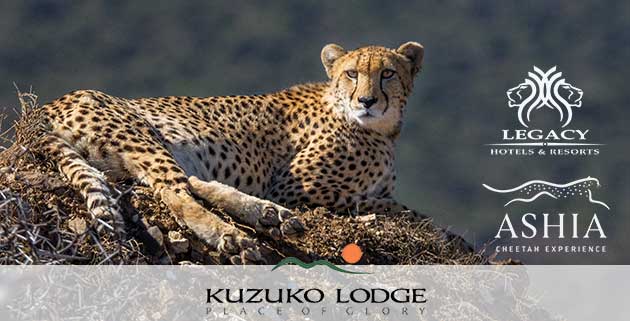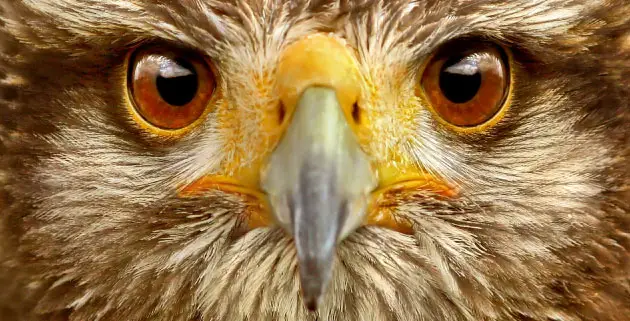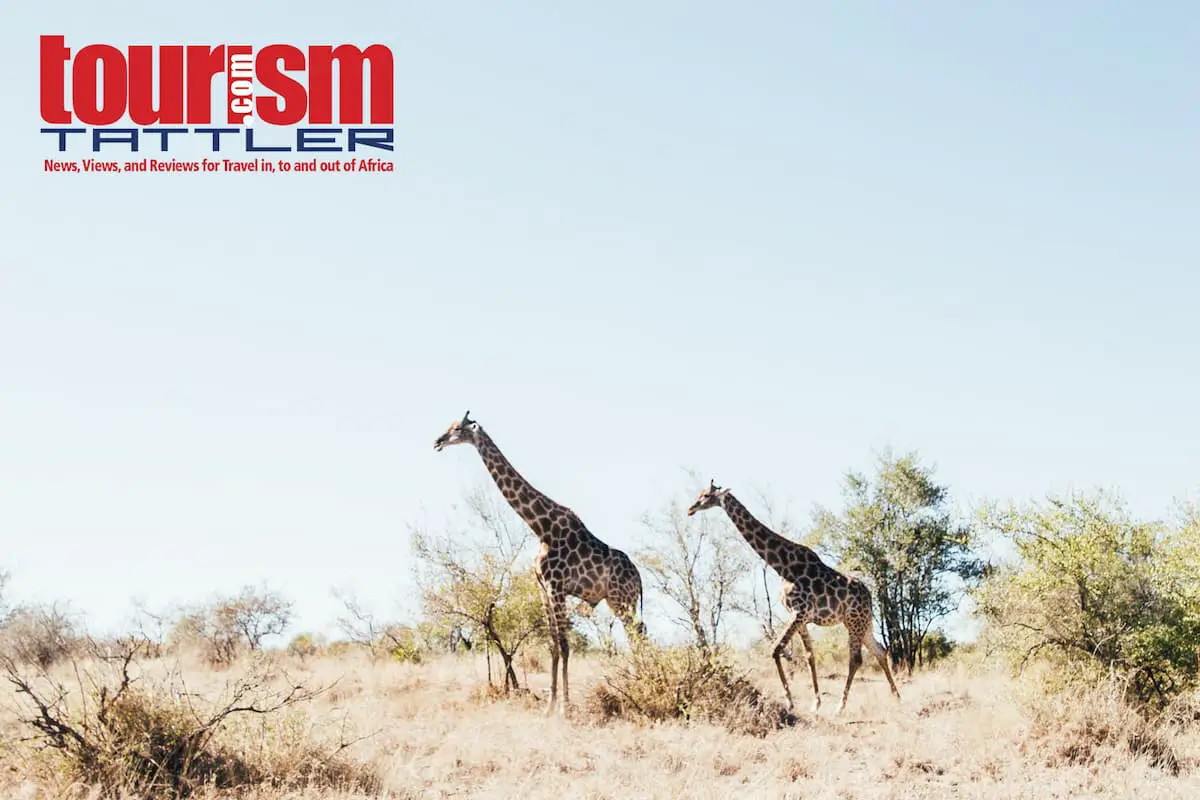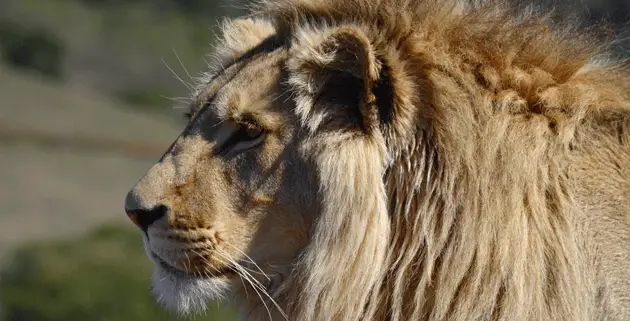The Business of Conservation
This article is extracted from a lecture presented by Paul Tudor Jones II, at the University of Glasgow’s Bute Hall in November 2014. In his lecture titled ‘The Business of Conservation’ Mr Jones addressed the role of philanthropy as a strong force in key worldwide issues such as tourism, poverty alleviation, education and conservation, writes Gerhard Damm, publisher of African Indaba.
An impressive audience of 400 staff, students, alumni and invited guests filled the University of Glasgow’s Bute Hall, to celebrate the award of an honorary degree to Mr. Jones, for his achievements in business and philanthropy. His continuing contributions to conservation are highly complementary to on-going research in the University’s Institute of Biodiversity, Animal Health and Comparative Medicine and the Boyd Orr Centre for Population and Ecosystem Health, which won the Queen’s Anniversary prize for Higher and Further Education in 2013.
Here are some extracts from the lecture:
Every year, 12 million hectares of land are lost to drought and desertification at the breathtaking rate of 23 hectares per minute.
The list of species to have gone extinct in just the past ten years includes the Golden toad of Costa Rica, the Baiji dolphin of the Yangtze River, the Pyrenean Ibex of Spain, and the West African black rhino. According to IUCN, more than 17,000 species on this earth are endangered. That includes 21 percent of all known mammals, 30 percent of all known amphibians, 12 percent of all known birds and 28 percent of all known reptiles.

All of this environmental depredation is the result of one species—homo sapiens. Our impact on our world is so great that a growing number of scientists have signed onto the proposal to christen a new geological epoch. Their name for that epoch? The Anthropocene.
For over a century, we have had hundreds of thousands of people from all walks of life actively engaged in the conservation movement—scientists, naturalists, government officials, philanthropists, and a multitude of passionate and committed individuals, many who go to heroic lengths.
But there is one group of people that has been conspicuously absent from much of our conservation, a group that we need now, and that is investors. Now, I know that placing investor and conservation in the same sentence will cause some to recoil. But tonight I will propose a few options that might be considered controversial, so let me point to something I read recently by the great biologist and naturalist, E.O. Wilson.
First, let me say to all scientists present tonight, especially biologists, I’m well aware of the bitter fight in biology over Wilson’s new understanding of evolution, and on that battle I am agnostic and therefore neutral. … But to me, more than anything else, E.O. Wilson is the guy who coined the beautiful term and concept of “biophilia,” which literally means “love of life or living systems.”
We need to be open to involving investors in the conservation movement for two reasons. First, the movement needs money. Second, the investors have it. Last year, Credit Suisse and the World Wildlife Fund commissioned a joint study on Conservation Finance. For tonight’s purposes, here are the two main takeaways from that study:
Private conservation funding worldwide needs to be 200 to 300 billion dollars per year, which is 20-30 times more money per year than it’s currently getting.
That number, while sounding enormous, is very achievable as it corresponds to about 1% of total private sector annual investments globally.
There are three main segments of investors. First are the High Net Worth and Ultra High Net Worth folks. Next are the Retail Investors, and last come the Institutional Investors. That first group, the high net worth folks – studies show that these investors are open to putting anywhere from 2 – 5% of their total assets in impact investing. Right now, the bankable assets of these folks is 46 trillion dollars. That asset base is projected to grow at 8% over the next years. If 1% of that were allocated to conservation finance, there’s your first 85 billion. That second group, the retail investors: Their current personal financial assets are around 53 trillion dollars and growing at 2% per year. If one percent of those assets were allocated to conservation finance, we’re talking 65 billion dollars a year. Lastly, the institutional investors. They’re at about 62 trillion dollars and projected to grow at 5% per year. 1% of that is 90 billion.
85 billion plus 65 billion plus 90 billion is 240 billion. Per year. Average.
There are obstacles to raising over 200 billion dollars in capital for conservation finance, but one of them is not that the money isn’t there. Global portfolio managers and asset managers need to start thinking in the direction of conservation finance so that they can advise their investors in that direction. But in order for those managers to do that, there need to be scalable and investable conservation projects available (editor’s emphasis).
To illustrate these projects, I’m going to get specific, and I’m going to focus on sub-Saharan Africa. First, the money’s not there. 78% of all current conservation finance is generated in developed countries, and 59% of it is spent there. Second, unstable governments are bad for the environment. The correlation between corruption levels and the destruction of wildlife is direct. Where governance is strong, conservation is possible no matter the challenge, but where governance is weak, the privatization of conservation could well be the only hope.
And the industry I’m going to focus on is tourism. I can speak to the topic with some familiarity as I operate 13 lodges in three African countries. In addition, tourism is already one of the top five export categories for 83 percent of all developing nations. The potential is massive.
According to IUCN, right now, in Africa, there are 1200 formal protected areas. Many of these areas are imperfect, but they are the last representations of natural habitat on the continent. Preserving and even expanding these areas is what the conservation fight in Africa is about.
There are basically four key categories of threat to the environment in Africa.
The first threat is the demand for high value wildlife products, such as rhino horns and elephant tusks. This is all about poaching for top dollar products.
The second threat is one of energy. Across Africa, many people are dependent upon firewood and charcoal for cooking and heating. Ninety percent of all wood consumed is used for fuel and charcoal, which leads to a depredation of forests and parks and also an annual revenue loss in African countries of approximately 2 billion dollars.
The third threat is the demand for protein, such as bushmeat, which is a generic term for any animal shot or harvested in the wild. This demand is twofold. First, many people living at subsistence levels in rural areas require the meat to keep from starving. Second, these same people, with little economic opportunity, turn to bushmeat hunting because they can sell the meat for consumption in urban areas.
And the fourth threat is the sheer demand for land, either for agricultural purposes or living space or natural resources.
In other words, these natural habitats are threatened because their economic value is based on unsustainable use (editor’s emphasis). To preserve them and protect them, their economic value needs to be transformed to a sustainable use. Tourism can be, and has been, one of those modes of transformation.
The direct contribution of Travel and Tourism to GDP in Sub Saharan Africa in 2012 was 36 billion dollars. That’s projected to rise to 61 billion by 2023. Tourism directly supported five and a half million jobs, and that will be almost 7 million in ten years. When you include jobs indirectly supported by the industry, the number climbs to over 13 million now and 17 million by 2023.
If we can develop more scalable conservation finance projects in tourism that can be replicated and whose success can be measured, asset managers can then persuade investors to rally around conservation finance, and those numbers can rise, and that is key because tourism in Africa is all about conservation.

A non-profit group called African Parks works with governments to rehabilitate national parks and ultimately make them profitable through tourism. It started with parks in Malawi and Zambia. It now operates seven parks and looks to operate twenty in six years. Its park in Malawi spans 70,000 hectares and, in six years, has been restocked with an array of wildlife that had all but disappeared. Employment has risen from 10 people to over 150 permanent jobs with an additional 100 people employed in a temporary capacity. Visitor numbers have grown from 0 to over 7,000 each year. Three different tourism operations have been established, each employing additional people. It is a transformation from a ‘consumption economy’ with environmental disaster as the inevitable end point to a ‘conservation economy’ which is sustainable.
In Botswana, tourism revenues have grown from 300 million in the 1990s to 3 billion dollars today, and approximately 40% of the country is under some type of wildlife protection. In Tanzania, in 2012, the contribution of tourism dollars to the national economy was 13.2% of the GDP. Many of the tourism dollars are coming from wildlife watching and photographic safaris.
But another form of tourism that generates a significant amount of revenue is hunting, and for those who are bitterly opposed to all forms of hunting, I ask you to hark back to E.O. Wilson’s line about a greater independence of thought (editor’s emphasis).
Photographic tourism is great in places where large animals roam and the scenery is spellbinding, but that’s not always the case in Africa. In places where landscape and wildlife are mundane, trophy hunting is the better land-use option. Resource economist Jon Barnes confirmed this with a detailed analysis. He concluded that for the sake of wildlife in large areas of Botswana, a ban on consumptive use, such as hunting, “would seriously jeopardize wildlife conservation.”
Here’s why that’s the case. Governments have to justify all use of the land in economic terms. If trophy hunting is not available to some communities, then their alternative is raising livestock, which takes a heavy toll on land and water resources. So it really does make more sense to lose an individual animal of an individual species now and then rather than risk losing an entire ecosystem. Other stakeholders agree.
Wilderness Safaris, a leading photo-tourism operator, has a position paper on trophy hunting, stating that ecotourism, on its own, cannot ensure the conservation of Africa as a whole and that hunting has been vital in destinations like South Africa, the Central African Republic and Burkina Faso.
In South Africa, game farms have literally changed the landscape. In 2002, there were fewer than 5000. Today, there are over 12,000. Those farms generate revenue in various ways, ranging from ecotourism to the sale of live animals, but hunting makes the most money by far. And it’s been good for the ecosystem. Today, there are 20,900 white rhinos in the country, more than in all the rest of Africa. And the wildlife population has gone from 575,000 in 1966 to 18.6 million today.
None of this would come as news to Teddy Roosevelt, one of the fathers of the conservation movement as well as an avid hunter and fisherman, like myself (editor’s emphasis). After he left the White House, he toured Africa and recorded his experiences in his book, African Game Trails. In it, he argues for a program of game reserves set aside for hunting in order to preserve animals. It stands to reason: if the long-term survival of an animal means the long-term financial sustenance of a community, then that animal will likely survive. The hunting industry has its flaws and failures. The goal must be to establish a tourism that benefits the communities living with these animals in a way that is ethical and sustainable.
But it’s not just about hunting or even ecotourism. There are a lot of innovative, private economic projects around conservation in Africa.
In Kenya, the Northern Rangelands Trust is pioneering a community project. It’s establishing a slaughterhouse for local farmers and herders; they can fatten and process their cattle in order to sell for top dollar in the city, and in return, they have to participate in conservation work, such as planting trees. In Namibia, 6.5 million hectares of its land are currently supporting 230,000 people through small, innovative community projects. And the amount of that country’s wildlife has increased 60% since the 1960s.
One more thing I’d like to touch on briefly is the importance of research. All the funding I’ve been talking about is for doing things, but some of that money definitely needs to be used for researching what to do. One quick example of how that works in African conservation: a place very near and dear to my heart: Serengeti.
Every year, the wildebeest migrate across the Serengeti, truly one of the most awesome spectacles in nature. At one time, they were dying out because of a virus they contracted through cattle, rinderpest. By the 1950’s, only, 200,000 were left.
But research led to a vaccine for the cattle, and today, the wildebeest population is 1.5 million. And many people get to witness that migration through ecotourism, all of which is possible because the migration occurs through the Serengeti National Park.
It all links and can be linked: conservation practitioners with conservation research, to health practitioners with health research, to national governments and local governments and the communities that live closest to the land and depend most on it. Investors truly have a unique opportunity to streamline the various work into a single, coherent effort that benefits the world. It’s already happening. All across Africa, and in other parts of the globe, the privatization of conservation is reaping incredible benefits for wildlife (editor’s emphasis). But we need more of these efforts, and we need them quickly.
We don’t know where our current ecological road will lead, but we know that if we continue down it, we’re going to end up at a place we’d prefer not to be. We don’t have to end up in that place, and in my deepest of hearts, I truly believe we won’t, and here’s why (Paul holds up a solar jar):
This is a solar jar. It works very simply. Set it outside during the day, and at night, it provides four hours of light. It costs only twelve dollars, and it is life-altering. 1.2 billion people in this world have no electricity. Imagine the intellectual capital to be gained if those 1.2 billion people got four more hours of productivity each day. Last year, 12,000 solar jars were distributed throughout Zimbabwe. 12,000 times four is 48,000 hours of more productivity in Zimbabwe. These jars are empowering the next generation of scientists, researchers, portfolio managers, conservationists and government officials of Zimbabwe to work and study and learn an extra four hours each day. And that’s why I believe we will find the solution to our environmental problems.
Things look bad now, but all the darkness in the world (lights are turned off in the room as Paul holds up the jar) cannot overcome the power of a single light.

To listen to the full speech of Mr. Jones – highly recommendable – click HERE.
Article published with acknowledgment to African Indaba: www.africanindaba.com





